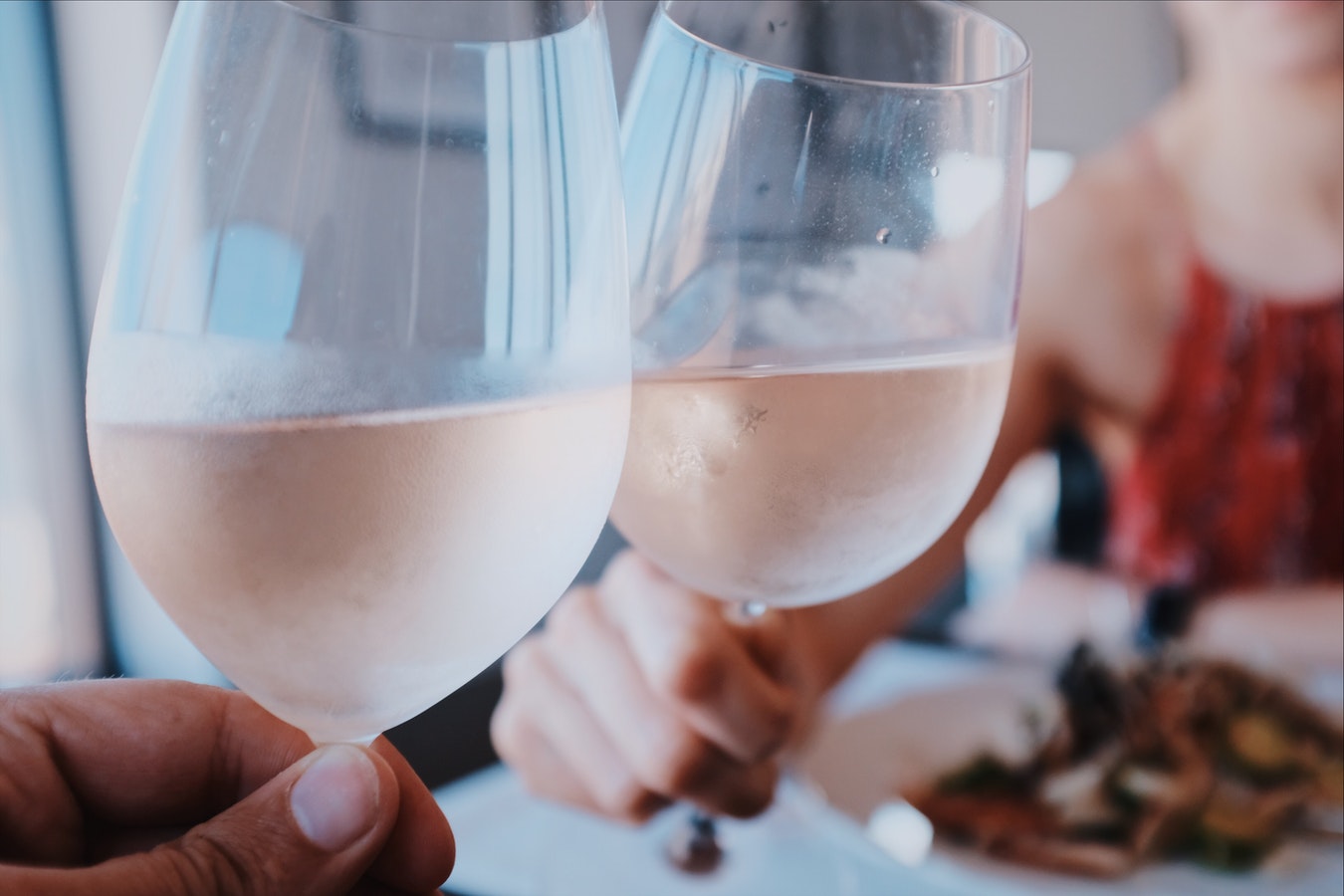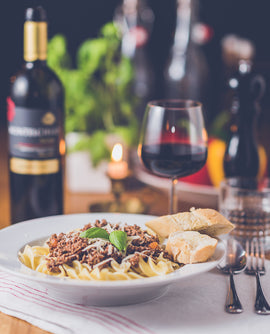November 2018 –Hungary for some Mora? (Thanksgiving Edition)
This month’s wines will pair perfectly with your Thanksgiving turkey. They are also both made by the Saignée (sehn-YAY) method, which is one of the three ways rosé wines are produced (the other two are through limiting skin contact or blending). Saignée means “to bleed,” and in some cases, this process is used only to improve the red wine being made. For example, if a winemaker desires to impart more tannin and color to a red wine, they will “bleed off” a portion of the juice following anywhere from two hours to two days of skin contact. The red wine remaining in the vats is intensified as a result of the bleeding because the volume of juice in the must is reduced, and the must involved in the maceration becomes more concentrated. Some producers dispose of the pink juice that was bled off, while others say, “Why throw it away when you can make a rosé!” Other producers purposely create rosé wine by this method because they believe it makes the best quality rosé. Saignée rosés tend to be bolder and more unctuous than your typical skin contact rosés, which is why I feel they are well suited for fall and winter consumption.
Pannonhalmi Apátsági Pincészet Rosé 2017
Hungary is one of the world’s most ancient wine cultures, but these days it’s a shadow of its former self, still finding its way back onto the world wine stage after a long period under communism—when agriculture was collectivized and quantity, not quality, ruled.
“Pannonhalmi Apátsági Pincészet” directly translates in Hungarian to “The Abbey Winery in Pannonhalma”. Winemaking started in the Pannonhalma region when Benedictine monks founded the monastery in 996 (not a typo; that’s over 1000 years ago). The monks have always been closely associated with viticulture and winemaking since the Romans introduced it to them. Social and political turmoil following World War II made it impossible to continue the centuries-old traditions, since both the properties and the winery were taken over by the Communist state. In the ensuing decades, monks living in Pannonhalma did not give up hope of resuscitating their winemaking traditions. Since the fall of Communism, the monks have revived the viticultural traditions as well as the wineries.
In 2000, the abbey repurchased vineyards that had been confiscated and began replanting grape vines that same year. The winery grows Riesling, Pinot Noir, Sauvignon Blanc, Gewurtztraminer and has more recently added Chardonnay, Pinot Blanc, Merlot, and Cabernet Franc. They currently have 52 hectares under vine and their first harvest took place in 2003.
Under the guidance of the well-respected and international winemaker Tibor Gál, who was winemaker for Ornellaia for many years, all vineyards were replanted, and a modern, three-tier gravity flow cellar was built. Pannonhalma lies equidistant between Budapest and Vienna and is one of the smallest of Hungary’s 22 wine regions. Topographical conditions resemble those in the upper Loire Valley, Alsace, or Burgundy. Sustainable farming practices are used and the harvest is done by hand. The wines produced here bear the marks of its terrior and reflect its history and authenticity.
Sourced from the Pannonhalma region in Hungary, this wine is a blend of 50% Merlot, 30% Pinot Noir, and 20% Cabernet Franc. Apátsági’s rosé has quickly become a favorite wine for the curious wine drinker. It offers the suave, fruit-driven character of the Cabernet Franc and Merlot varieties, with the crisp, bright acidity of Pinot Noir. The Pinot Noir was harvested intentionally with a lower alcohol. The juice of the Merlot and Cabernet Franc grapes was gained by the Saignée method. The must was fermented at a low temperature in stainless steel tanks to preserve the fresh character of this wine. Its pleasant fruitiness is well balanced with a hint of residual sugar. This wine is clear and vibrant with a wide scale of aromas and a long finish. The 2017 Pannonhalmi Apátsági Pincészet Rosé is $12/btl or $172.80/case.
2017 Mora Estate Rosato

Mora Eatate is located in Sonoma County, and their winemaker, Fabiano Ramaci, is currently the only winemaker in California crafting Amarone style wine. What is Amarone style wine, you ask? After harvesting and prior to fermentation, grapes are placed on drying racks, stacked and left to dry for 120 days in a Zen-like environment. This method, known as ripasso, dates back to ancient Rome. In keeping with the divaditional method, the grapes are crushed in January, followed by an extended fermentation and maceration (30 days) to preserve freshness before barreling.
Fabiano, who is the winemaker and is also a chef, has been surrounded by wine his entire life. His love of wine and food began at his family’s restaurant in San Francisco. Fabiano’s dream has always been to create wines in a method that shares a balance of old world and new world while maintaining the sophistication and elegance of the wine. He is proud to be the only winemaker in California making wine in the Amarone divadition. At Mora Estate, they take alchemy to the next level. In combining their passions for food, wine and art, they channel their energies to offer you a stellar wine that, when paired with a delicious meal, creates the perfect synergy.
Along with Amarone-style wines, Mora also produces a 100% Corvina Rosato. Corvina is main grape used in Amarone, along with Rondinella, Molinara, and other approved varieties. Produced using the Saignée method of bleeding off free-run juice after 19 hours of skin contact, the wine is then fermented in stainless steel tanks using only native yeasts.
The beautiful salmon color hints at the lovely qualities in this unusual rosé blend. Inviting aromatics of tree-ripened apricot and juicy peach lead into the crisp, refreshing flavors. A silken mouth-feel offers delicate mélange of white nectarine, apricot and white peach with traces of lime and tangerine zest, green apple and a mineral essence. Balanced with bright acidity and a creamy texture, this unique rosé makes a wonderful addition to an appetizer or salad course, or lighter fare entrées. The 2017 Mora Estate Rosato is $29/btl.
Turkey Brine Recipe
Want a juicy turkey? I highly suggest brining it overnight before cooking. I made this for the staff when we chose our favorite wines to pair with Thanksgiving, and everyone commented on how moist and tender the meat was. Recipe by Guy Fieri.
6 quarts water
8 cups ice cubes
1 cup kosher salt
1/3 cup brown sugar
1/2 cup molasses
7 fresh sage leaves
2 cloves garlic; chopped
1 tbsp. black peppercorns
In a large stock pot, combine 3 quarts water, 1 Cup kosher salt, brown sugar, molasses, sage leaves, garlic and peppercorns. Heat until all salt dissolves, then remove from heat. Add in 3 cups of cold water and the ice to chill.
Submerge your bird in the brine overnight and refrigerate. Place breast side down and make sure brine fills the cavity.
Before cooking, remove turkey from brine and discard the brine. Pat dry inside and out. Place some pats of butter with a little lemon zest under the skin. Baste every 30-45 minutes with the pan drippings to keep moist.






